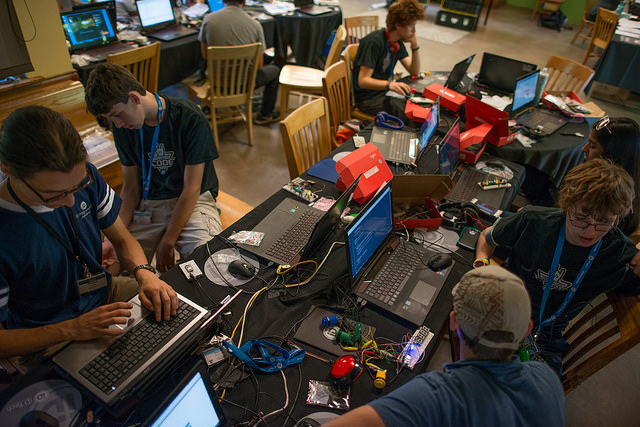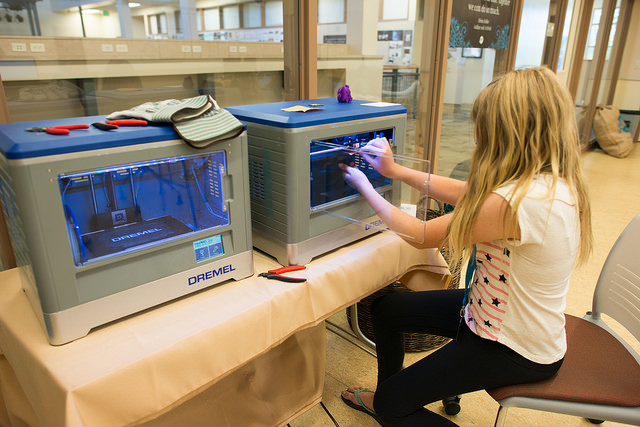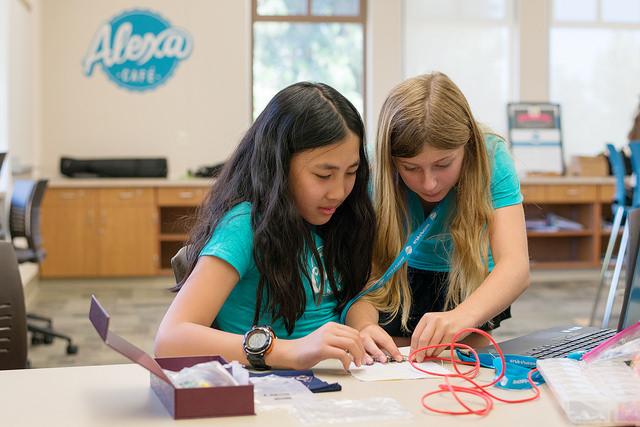For those looking to bring electronics and physical computing to students, summer provides a great opportunity. Outside the restrictions of typical classroom life (standards, testing, scheduling, etc), it can be much easier to try new things,and electronics are no exception.
While great for bringing standards to life through hands-on projects, some educators become overwhelmed at the idea of figuring out how exactly to fit physical computing into their classroom.

This is where summer school and summer camps come in. Programs such as iD Tech and Digital Media Academy have been using physical computing to excite students about STEM for years. From classes based on robotics and cryptography to wearable tech and everything in between, summer programs have found one of the best ways to excite students is to let them get hands-on with electronics.
Student Benefits
Students who are given the chance to try electronics in summer school or camps often discover a new passion they wouldn’t have considered otherwise. Outside of the structure of a classroom, students are able to explore physical computing without the pressure of receiving a grade for their efforts. Once they’ve had the chance to do so, many students look to continue pursuing this new passion in classes throughout the school year, leading to an increased demand for coding, electronics and robotics classes in the schools.

Even for students who do not decide to pursue physical computing during the school year, by participating in these summer camps, they learn “soft skills” such as problem-solving, teamwork and persistence. These skills can immediately be applied to any class once school starts back in the fall.
Bringing it to the Classroom
This same concept works the same way for traditional summer school programs where there may be a little more flexibility than during the school year. Simply giving students the chance to experience project based learning through electronics often makes the content more enjoyable and relatable for students, leading to higher levels of engagement and retention.

Once teachers have seen the benefits of teaching with physical computing, they are often more willing to find ways to add it to their lessons throughout the school year.
This year, consider adding electronics to your summer programs and see where it takes you.


helpful information